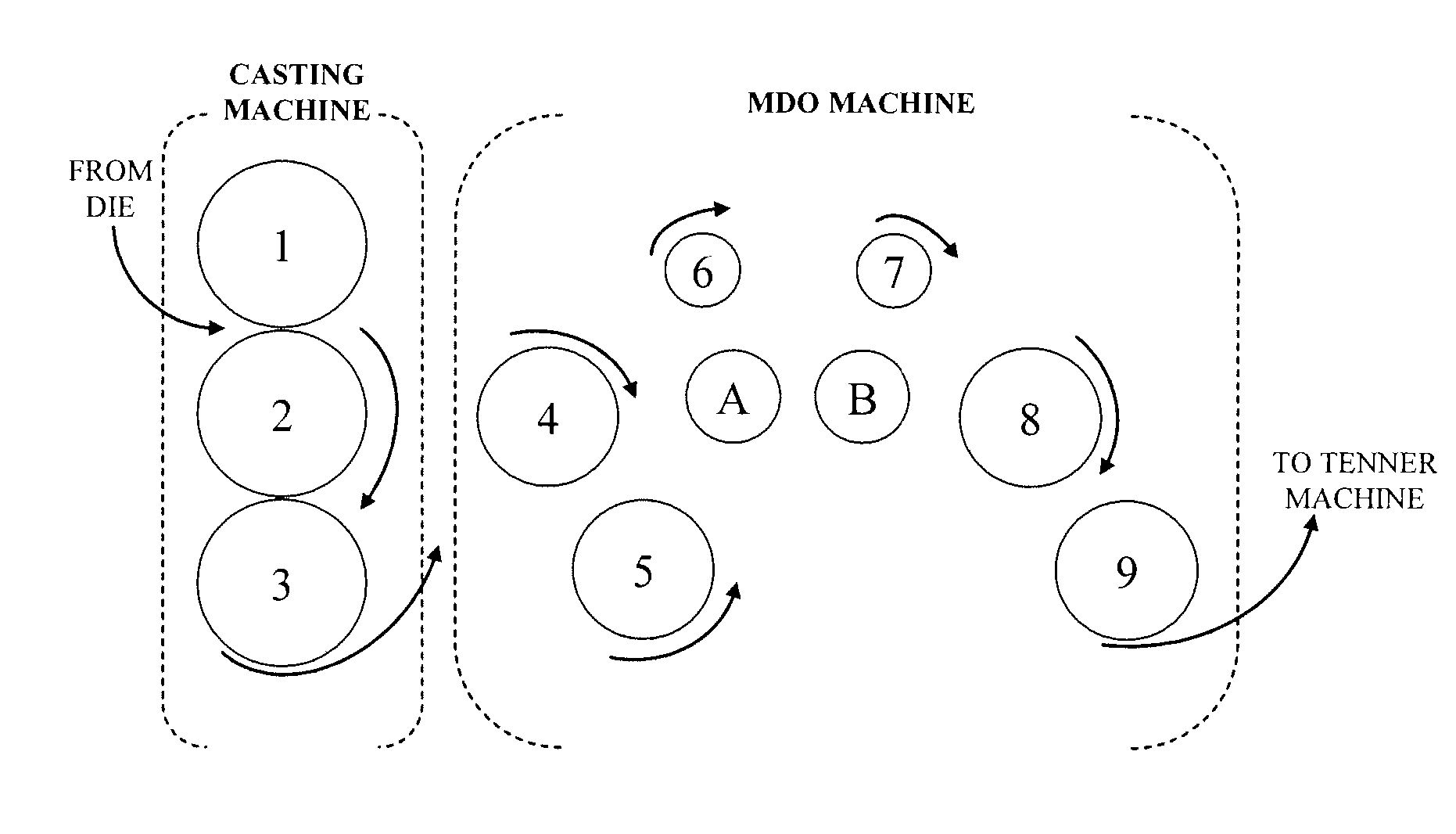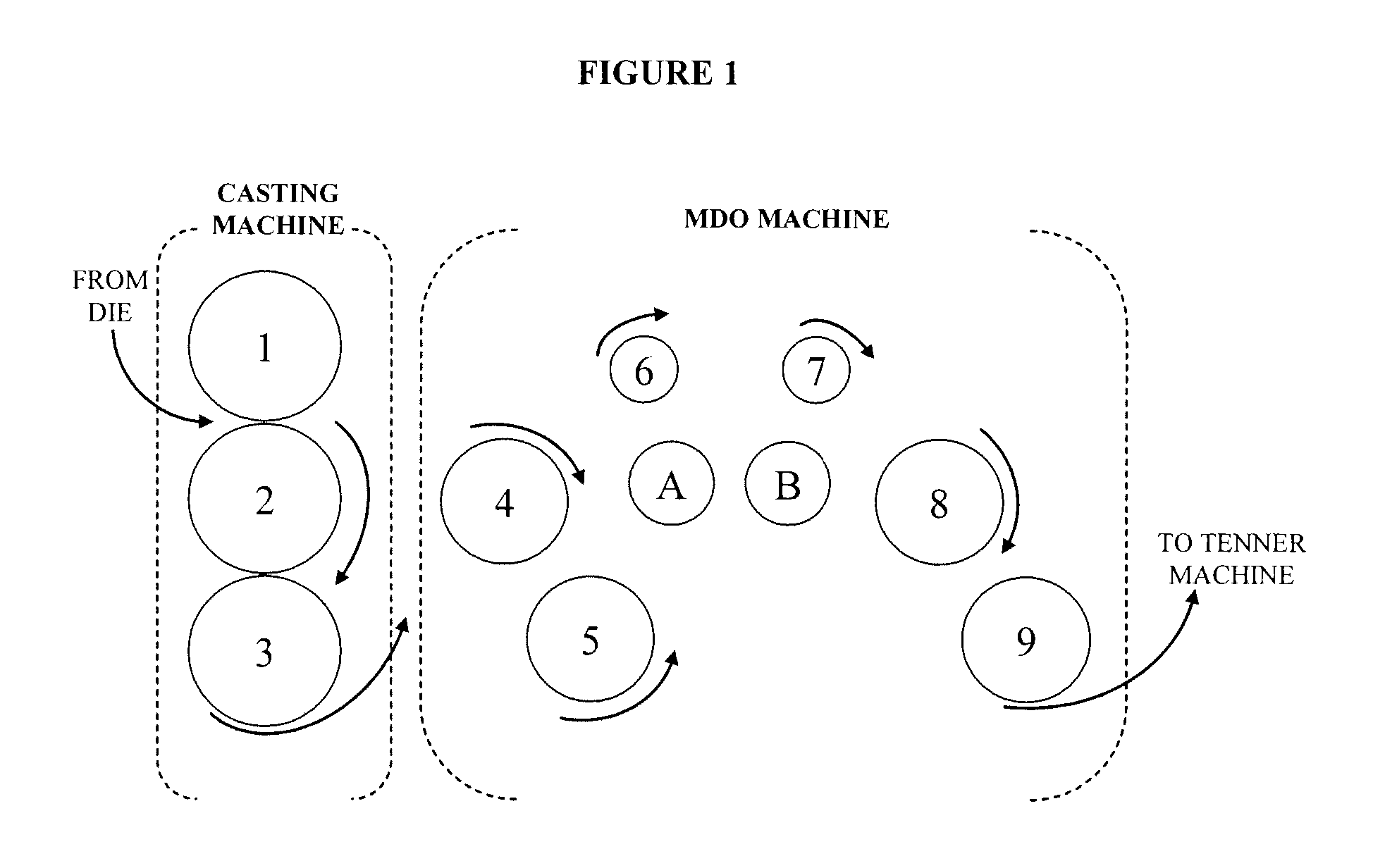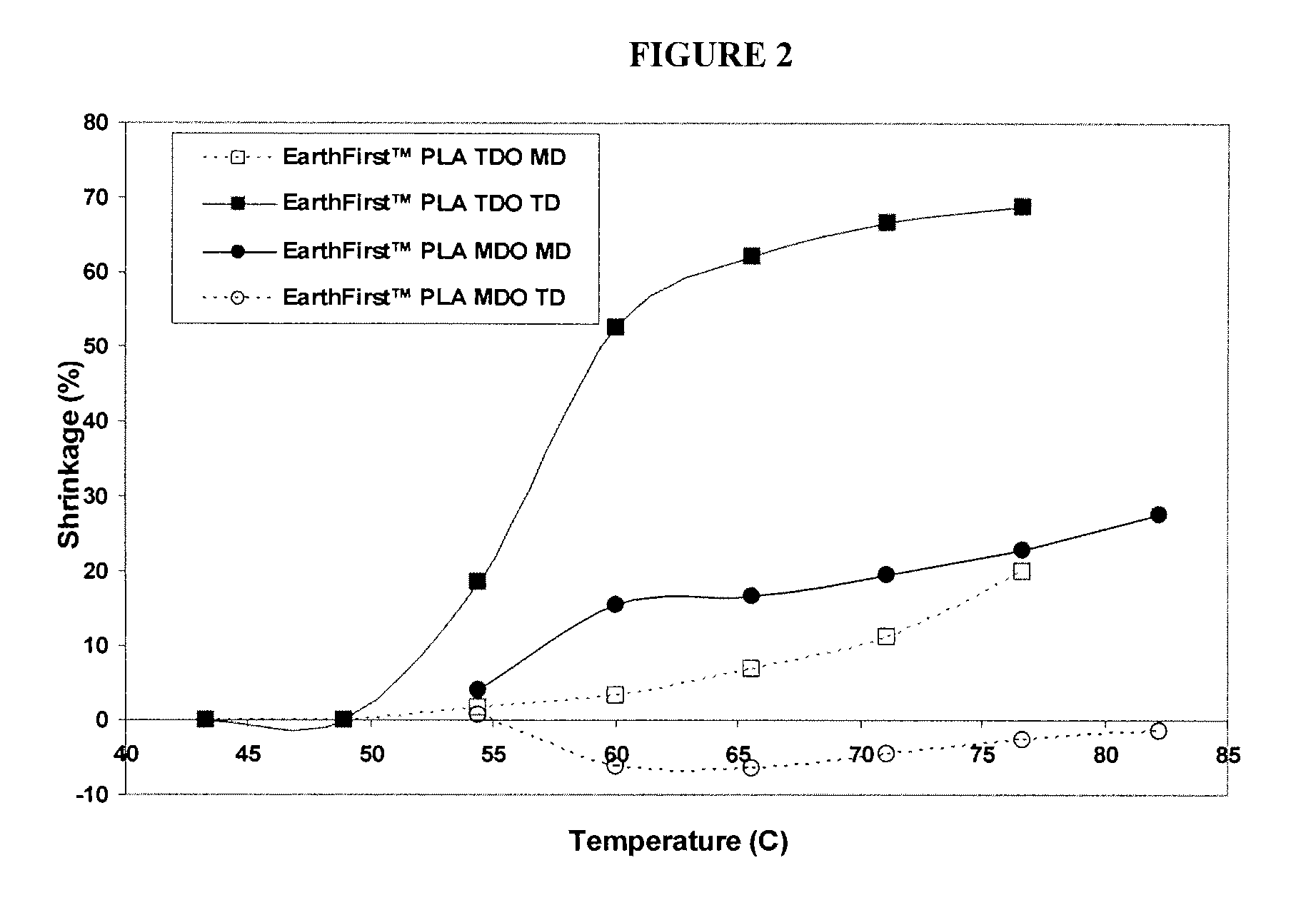Polylactic acid shrink films and methods of casting same
a polylactic acid and shrink film technology, applied in the field of shrink film, can solve the problems of concomitant film shrinkage, limited shrink film application, and drawback of the outer edge of the film
- Summary
- Abstract
- Description
- Claims
- Application Information
AI Technical Summary
Benefits of technology
Problems solved by technology
Method used
Image
Examples
Embodiment Construction
[0021] In one embodiment of the instant invention, plastic films and a method of their manufacture are described. The polymer films are generated that, when heat treated, shrink in the transverse direction and exhibit little to no shrinkage in the machine direction. In a preferred embodiment, the shrink films of the invention exhibits a shrinkage, upon heating, in the transverse direction of no less than about 40%, preferably no less than about 50%, and most preferably no less than about 60%. Similarly, in a preferred embodiment, the shrink films of the invention exhibits a shrinkage, upon heating, in the machine direction of no greater than about 10%, preferably no greater than about 5%, even more preferably no greater than about 3%, and most preferably about 0% or less (a negative value indicates growth). The shrinkage in either direction preferably occurs substantially simultaneously.
[0022] The machine direction will be defined herein as the “longitudinal” or “length” direction....
PUM
| Property | Measurement | Unit |
|---|---|---|
| shrinkage | aaaaa | aaaaa |
| shrinkage | aaaaa | aaaaa |
| shrinkage | aaaaa | aaaaa |
Abstract
Description
Claims
Application Information
 Login to View More
Login to View More - R&D
- Intellectual Property
- Life Sciences
- Materials
- Tech Scout
- Unparalleled Data Quality
- Higher Quality Content
- 60% Fewer Hallucinations
Browse by: Latest US Patents, China's latest patents, Technical Efficacy Thesaurus, Application Domain, Technology Topic, Popular Technical Reports.
© 2025 PatSnap. All rights reserved.Legal|Privacy policy|Modern Slavery Act Transparency Statement|Sitemap|About US| Contact US: help@patsnap.com



